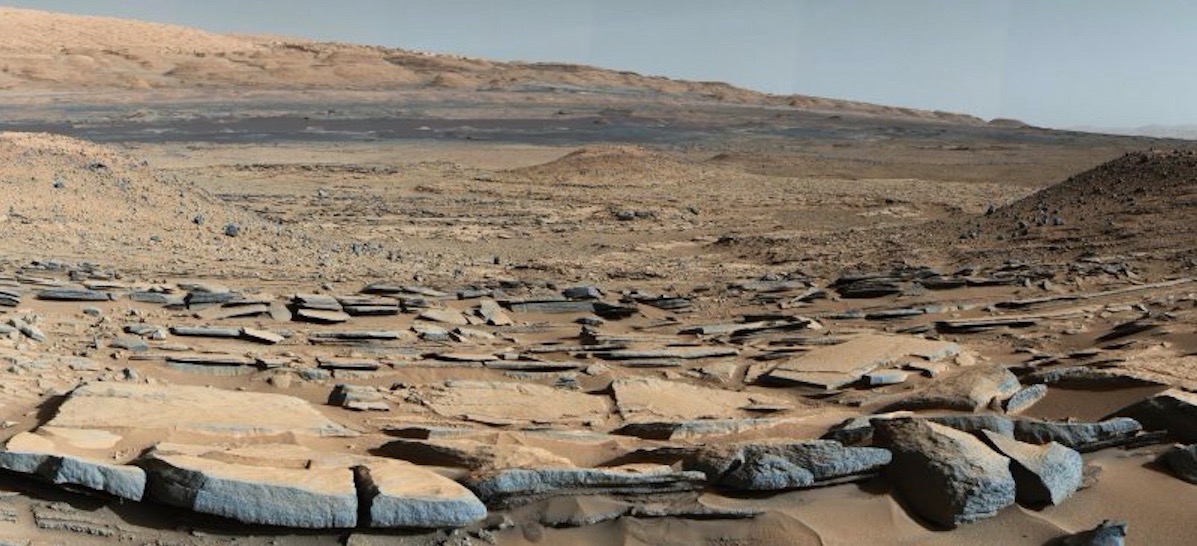
Mars and Oklahoma might share a surprising seismic bond.
The fracking boom has spurred a surge of tremors across the Sooner State and neighboring Texas, scientists say. These quakes are caused by the injection of wastewater underground, which increases pressure and leads to the slippage of tectonic faults.
Shallow quakes on the Red Planet — such as the one recently detected by NASA's Insight Mars lander — might have a similar origin, a new study reports.
Related: Mars InSight in Photos: NASA's Mission to Probe Core of the Red Planet
Michael Manga, a planetary scientist at the University of California Berkeley, and his colleagues propose that compressed aquifers can trigger marsquakes. The compression comes courtesy of the Red Planet's frigid temperatures, which freeze the aquifers' upper layers. (Water expands as it freezes, you may recall.)
But the compression alone probably isn't enough to get the red ground shaking, according to the researchers. Their computer simulations identified two likely triggers — tidal tugs from Phobos, the larger and closer-orbiting of Mars' two moons, and changes in barometric pressure caused by the warming and cooling of the planet's thin atmosphere.
Further observations by InSight may reveal whether this interpretation is correct, the researchers said. If it is, future Mars explorers could use quakes to find groundwater, then access the stuff simply by drilling down. No pumping would be required; the pressurized water would come bubbling to the surface on its own.
Get the Space.com Newsletter
Breaking space news, the latest updates on rocket launches, skywatching events and more!
And this general process may not be restricted to Earth and Mars. The compression of subsurface water may give rise to ice volcanoes, ridges and other features on the icy moons of the outer solar system, according to Manga.
He and his colleagues detailed the research earlier this month in the journal Geophysical Research Letters.
NASA's $800 million InSight mission touched down on the Red Planet in November 2018. The lander is using a suite of supersensitive seismometers and other gear to map the Martian interior in unprecedented detail.
Not everything is going smoothly, however. InSight's burrowing heat probe has not dug as deeply as desired, and mission team members are still trying to figure out what halted its progress.
- 7 Biggest Mysteries of Mars
- What is Mars Made Of? | Composition of Planet Mars
- Occupy Mars: History of Robotic Red Planet Missions (Infographic)
Mike Wall's book about the search for alien life, "Out There" (Grand Central Publishing, 2018; illustrated by Karl Tate), is out now. Follow him on Twitter @michaeldwall. Follow us on Twitter @Spacedotcom or Facebook.
Join our Space Forums to keep talking space on the latest missions, night sky and more! And if you have a news tip, correction or comment, let us know at: community@space.com.

Michael Wall is a Senior Space Writer with Space.com and joined the team in 2010. He primarily covers exoplanets, spaceflight and military space, but has been known to dabble in the space art beat. His book about the search for alien life, "Out There," was published on Nov. 13, 2018. Before becoming a science writer, Michael worked as a herpetologist and wildlife biologist. He has a Ph.D. in evolutionary biology from the University of Sydney, Australia, a bachelor's degree from the University of Arizona, and a graduate certificate in science writing from the University of California, Santa Cruz. To find out what his latest project is, you can follow Michael on Twitter.









